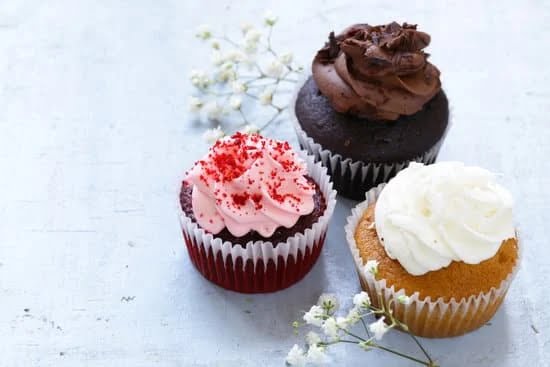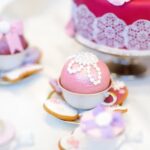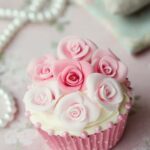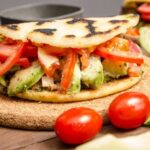Decorating Easter cake is not just a delightful way to celebrate the festive season, but it also offers a fun and creative activity for both adults and children. Whether you are an experienced baker or a novice in the kitchen, decorating Easter cakes can be a wonderful opportunity to showcase your artistic skills and create edible works of art that will bring joy to your family and friends.
In this article, we will explore the reasons why decorating Easter cake is such a popular tradition and delve into the various techniques, tools, and recipes that will help you master this delightful craft.
Easter cake decorating has a rich history that spans centuries, with origins rooted in religious traditions and symbolism. Through the years, this practice has evolved into an art form filled with intricate designs, vibrant colors, and whimsical themes. As we unravel the fascinating history of Easter cake decorating, you will gain a deeper appreciation for the traditions passed down through generations and understand how they have shaped the modern-day practices we enjoy today.
To embark on your journey of creating beautiful Easter cakes, it is important to gather a few essential tools and ingredients. From reliable spatulas and piping bags to versatile food coloring and edible fondant decorations – each piece plays a significant role in bringing your imaginative creations to life. We will explore these indispensable items in detail so that you can equip yourself with everything you need before beginning your baking adventure.
While setting up the foundation for your Easter cake is crucial, knowing how to bake it perfectly is equally important. With our step-by-step guide, you will learn valuable tips and tricks that can transform an ordinary cake into a moist, fluffy masterpiece ready for decoration. From measuring ingredients accurately to achieving the ideal texture – these techniques ensure that your base creates a perfect canvas for your artistic expression.
By understanding why decorating Easter cake is enjoyable, appreciating its historical significance, gathering essential tools, mastering baking techniques, exploring various decorative methods – from buttercream frosting to royal icing, and finding inspiration through Easter-themed designs, you will be well-prepared to embark on your cake decorating journey. So put on your apron, gather your supplies, and get ready to create delicious and visually stunning Easter cakes that will impress both young and old alike.
History of Easter Cake Decorating
The tradition of decorating Easter cakes dates back centuries, with its origins rooted in the celebration of Easter and the symbolism associated with it. The practice can be traced back to ancient pagan rituals that celebrated the arrival of spring and the rebirth of nature. These rituals eventually merged with Christian traditions, resulting in the modern-day practice of decorating Easter cakes.
One of the earliest forms of decorated Easter cakes can be seen in the Middle Ages, where elaborate creations were made for religious celebrations. These cakes were often adorned with intricate designs and religious symbols such as crosses and lambs, representing the crucifixion and resurrection of Jesus Christ.
As time went on, different regions developed their own unique styles of Easter cake decorating. In Eastern European countries such as Russia and Ukraine, beautifully decorated Paska bread is a staple during Easter celebrations. The bread is typically adorned with intricate designs made from dough or edible decorations like colored eggs and flowers.
In Western countries like England, Germany, and France, the tradition evolved into decorating rich fruitcakes or sponge cakes with marzipan or icing. These decorated cakes are often shaped like lambs or have floral designs symbolizing new life and growth.
Overall, the history of Easter cake decorating showcases a rich cultural tapestry that has been passed down through generations. It serves as a reminder of the significance of Easter as a time for renewal and new beginnings.
| Region | Decoration Style |
|---|---|
| Russia | Intricate designs made from dough or edible decorations like colored eggs |
| Ukraine | Paska bread adorned with elaborate designs made from dough or edible decorations |
| England | Rich fruitcakes or sponge cakes decorated with marzipan or icing in the shape of lambs or floral designs |
| Germany | Rich fruitcakes or sponge cakes adorned with marzipan or icing in the shape of lambs or floral designs |
| France | Rich fruitcakes or sponge cakes decorated with marzipan or icing in the shape of lambs or floral designs |
Essential Tools and Ingredients for Decorating Easter Cake
Decorating an Easter cake requires a variety of tools and ingredients to ensure that the final product is not only visually appealing but also delicious. Whether you are a novice or experienced baker, having the right equipment and supplies is essential for successful cake decoration. Here is a list of some essential tools and ingredients that you will need:
Tools
- Spatulas: A set of spatulas in different sizes will come in handy for spreading frosting and smoothing out the sides and top of the cake.
- Offset spatula: This tool has a long, narrow blade that can be used for precise icing and smooth application of buttercream frosting.
- Piping bags and tips: These are essential for creating intricate designs on your Easter cake. You can use different piping tips to achieve various shapes and patterns.
- Cake turntable: This rotating stand makes it easier to frost cakes evenly from all angles without having to constantly move the cake.
- Decorating brushes: Use these brushes to add details with food coloring or edible paints.
- Cake leveler: This tool ensures your cake layers are even before assembling them.
Ingredients
- Cake mix or homemade cake batter: Choose your favorite flavor, such as vanilla, chocolate, or carrot, to serve as the base for your decorated Easter cake.
- Buttercream frosting: This classic frosting is versatile and easy to work with for creating borders, flowers, and other decorations on your cake.
- Fondant: A pliable icing that can be rolled out like dough, fondant allows you to create smooth finishes on your cake and intricate designs.
- Food coloring gels/pastes/liquids: These additives give vibrant colors to your icing and fondant so you can create beautiful designs using different shades.
- Edible decorations: Sprinkles, candy pearls, edible glitter, and chocolate eggs are just a few examples of edible decorations that can add visual appeal to your Easter cake.
By making sure you have these essential tools and ingredients on hand, you will be well-prepared to decorate an Easter cake that is not only visually stunning but also tastes amazing. The next section will guide you through step-by-step instructions for baking the perfect Easter cake base to serve as a canvas for your creative designs.
Step-by-Step Guide to Baking the Perfect Easter Cake
Baking the perfect Easter cake requires careful attention to detail and a few key techniques. With the right tips and tricks, you can achieve a moist and fluffy base that will serve as the canvas for your beautiful decorations. In this section, we will provide a step-by-step guide to help you bake the perfect Easter cake.
Step 1: Gathering Your Ingredients
Before you begin baking, it’s important to ensure that you have all the necessary ingredients on hand. For a basic Easter cake, you will need flour, sugar, eggs, butter, baking powder, milk, and vanilla extract. You may also want to consider adding additional flavors such as lemon zest or almond extract for a unique twist.
Step 2: Mixing the Batter
The first step in mixing the batter is to cream together the butter and sugar until light and fluffy. This can be done with an electric mixer or by hand using a sturdy wooden spoon. Next, add in the eggs one at a time, making sure each egg is fully incorporated before adding the next.
In a separate bowl, whisk together the dry ingredients (flour and baking powder). Gradually add the dry ingredients to the butter mixture alternating with small amounts of milk. Finally, stir in vanilla extract or any additional flavoring.
Step 3: Baking Your Cake
Preheat your oven to the recommended temperature specified in your recipe. While waiting for it to heat up, prepare your cake pans by greasing them with butter or non-stick cooking spray and lining them with parchment paper for easy removal later on. Pour an equal amount of batter into each pan and smooth out the tops with a spatula. Place them in the preheated oven and set a timer based on your recipe’s instructions.
Step 4: Testing for Doneness
To check if your cake is done baking, insert a toothpick or cake tester into the center of the cake. If it comes out clean or with just a few moist crumbs attached, the cake is ready. Remove the pans from the oven and let them cool on a wire rack for about 10 minutes. Afterward, carefully invert the cakes onto the rack to cool completely before decorating.
Remember, every oven is different, so baking times may vary. It’s always recommended to follow your specific recipe’s instructions and keep an eye on your cakes while they bake. With these step-by-step instructions, you can bake a perfect Easter cake that will provide a delicious foundation for your festive decorations.
Popular Easter Cake Decorating Techniques
When it comes to decorating Easter cakes, there are a variety of techniques that can help you create beautiful and festive designs. Three of the most popular techniques are buttercream frosting, fondant, and royal icing. Each of these techniques has its own unique qualities and can be used to achieve different looks for your Easter cake.
Buttercream frosting is a versatile option that is loved by many bakers for its creamy texture and ease of use. This type of frosting is made by creaming butter with powdered sugar to create a smooth mixture that can be easily spread or piped onto cakes.
Buttercream frosting can be tinted with food coloring to achieve vibrant colors, making it perfect for creating pastel shades for your Easter cake. This technique allows for creativity with different piping tips to create various designs such as flowers, rosettes, or borders.
Another popular technique for decorating Easter cakes is fondant. Fondant is a pliable icing-like paste that can be rolled out and draped over a cake to create a smooth and flawless finish. It acts as a canvas for intricate designs and decorations.
Fondant can also be molded into different shapes such as flowers, bows, or more elaborate figures like bunnies or chicks. It provides a clean look with sharp edges and adds an elegant touch to any Easter-themed cake.
Royal icing is another commonly used technique in Easter cake decoration. Made from egg whites and powdered sugar, royal icing has a light consistency that hardens when dry, making it ideal for creating intricate details on your cake. Piped onto the cake using various tips, royal icing can create delicate patterns like lacework or filigree designs. It also holds its shape well when used to make decorations such as flowers or leaves.
| Technique | Description |
|---|---|
| Buttercream Frosting | A versatile option with a creamy texture that can be easily spread or piped onto cakes. Perfect for creating pastel shades and various designs. |
| Fondant | A pliable icing-like paste that can be rolled out to create a smooth finish. Ideal for intricate designs, decorations, and molded shapes. |
| Royal Icing | Made from egg whites and powdered sugar, royal icing hardens when dry. Great for creating intricate details, patterns, and decorations. |
Easter-inspired Cake Design Ideas
When it comes to decorating an Easter cake, the design ideas are endless. From classic pastel colors to adorable bunny and chick themes, there are so many options to choose from. Not only will these designs make your cake visually appealing, but they will also capture the essence of Easter and add a festive touch to any celebration.
One popular design idea for an Easter cake is using pastel colors. Pastels such as pink, blue, yellow, and lavender are commonly associated with Easter and can create a soft and elegant look for your cake. You can decorate the cake with buttercream frosting in various pastel hues or use food coloring to achieve the desired colors. Adding some edible decorations like flowers or sprinkles in complementary pastel shades will enhance the overall look of the cake.
Another fun and cute design idea for an Easter cake is incorporating bunny and chick themes. These iconic symbols of Easter can be easily created using fondant or marzipan. You can mold them into shapes of bunnies or chicks and place them on top of the cake as cute little characters. To add more creativity, you can use edible paints or food coloring pens to draw facial features on these fondant or marzipan figures.
| Design Idea | Description |
|---|---|
| Pastel Buttercream Garden | A three-tiered cake decorated with different shades of pastel buttercream flowers and leaves. |
| Bunny Garden Party | A sheet cake decorated with a green grass buttercream base, fondant bunnies, edible flower decorations, and a white picket fence made from piped royal icing. |
| Chick Nest | A round cake decorated with shredded coconut dyed yellow to resemble a nest, with fondant chicks and chocolate eggs placed on top. |
These are just a few ideas to get you started. Remember, the key is to have fun and let your creativity flow when designing your Easter cake. Whether you choose classic pastel colors or opt for adorable bunny and chick themes, your beautifully decorated Easter cake will surely be a showstopper at your celebration.
Advanced Decorating Techniques
Once you have mastered the basics of Easter cake decorating, it’s time to take your skills to the next level with advanced techniques. Piping, stenciling, and sugar sculpting are three popular methods that can help you create stunning designs on your Easter cake. These techniques allow for intricate details and personalized touches that will impress your friends and family.
Piping is a technique that involves using a piping bag fitted with different tips to create various shapes and designs on the surface of the cake. You can use buttercream frosting or royal icing for piping, depending on the desired outcome. With practice and patience, you can create beautiful flowers, leaves, borders, and even delicate filigree patterns.
The key to mastering piping is consistency in pressure and movement. Start by practicing simple shapes like dots and lines before moving on to more complex designs.
Stenciling is another technique that adds a professional touch to your decorated Easter cake. It involves using specially designed stencils to create intricate patterns or images on the surface of the cake. To stencil your cake, secure the stencil onto the cake using tape or small weights.
Then, gently spread icing over the stencil using an offset spatula or a bench scraper. Carefully lift off the stencil to reveal the design underneath. Stenciling allows for endless possibilities in terms of patterns and themes.
If you’re looking for a show-stopping centerpiece for your Easter celebration, sugar sculpting is an advanced technique that can elevate your cake decorations to a whole new level. Sugar sculpting involves molding sugar paste or gum paste into intricate shapes and figures that can be used as cake toppers or embellishments. From adorable bunnies to delicate flowers, there are countless possibilities when it comes to sugar sculpting.
It requires patience and practice as it can be quite challenging due to its delicate nature. However, with time and dedication, you can create edible works of art that will leave your guests in awe.
Mastering these advanced decorating techniques will take time and practice, but the results will be well worth the effort. Piping, stenciling, and sugar sculpting allow you to add a personal touch and bring your creativity to life on your Easter cake. Whether you choose to create intricate designs or whimsical figures, these techniques will help you take your cake decorations to new heights.
Tips for Creating Customized Easter Cake Toppers
Creating customized Easter cake toppers is a great way to add a personal touch and make your cake truly unique. Whether you prefer DIY options or store-bought decorations, there are plenty of choices available to suit your style and skill level. Here are some tips for creating customized Easter cake toppers:
DIY Options
One of the benefits of creating your own Easter cake toppers is the ability to let your creativity shine. You can personalize the decorations to match your desired theme, colors, or even include specific elements that hold special meaning. Here are a few DIY ideas for customized Easter cake toppers:
- Fondant Figures: Use fondant or gum paste to create adorable figurines like bunnies, chicks, or eggs. Mold the shapes by hand and use edible food coloring or lustre dust for added vibrancy.
- Paper Cutouts: Print out Easter-themed designs on sturdy cardstock and cut them out. Attach the paper cutouts to toothpicks or skewers using tape or glue and insert them into the cake.
- Chocolate Decorations: Create chocolate molds of Easter-related shapes such as flowers, butterflies, or crosses. Fill the molds with melted chocolate and allow them to set before placing them on top of the cake.
- Edible Images: Print out edible images from a bakery supply store or online vendor featuring Easter motifs like flowers, bunnies, or spring landscapes. Carefully place these on top of the frosted cake for a professional look.
Store-Bought Options
If you prefer convenience or lack time for extensive DIY projects, there are numerous store-bought options available for personalized Easter cake toppers. These pre-made decorations offer a quick and easy way to customize your cake without compromising on creativity:
- Cake Toppers: Look for ready-made edible cake decorations specifically designed for Easter celebrations. These may include edible sugar flowers, Easter-themed picks, or custom cake toppers featuring phrases like “Happy Easter.”
- Edible Sprinkles and Confetti: Decorate your cake with colorful sprinkles, confetti, or candy shapes that are easy to find at baking supply stores. These can add a festive touch and create a visually appealing design.
- Customizable Candles: Add a fun and personalized touch by using customizable candles that spell out words or contain images related to Easter. These candles can be easily inserted into the top of the cake for an eye-catching display.
Remember to always consider the size and weight of the cake toppers when selecting your decorations, ensuring that they won’t cause the cake layers to collapse or topple over.
Whether you choose to make your own DIY decorations or opt for store-bought options, creating customized Easter cake toppers is an excellent way to personalize your cake and showcase your creativity. Experiment with different techniques and have fun putting together unique designs that will leave a lasting impression on both children and adults alike.
Delicious Easter Cake Recipes
Easter is a time when families gather together to celebrate and indulge in delicious treats, and what better way to impress your loved ones than with a beautifully decorated Easter cake? While the design and presentation of the cake are important, the flavor should not be overlooked either. In this section, we will explore some mouthwatering Easter cake recipes that are sure to satisfy everyone’s taste buds.
- Traditional Carrot Cake: A classic Easter treat, carrot cake is moist and full of flavor. The combination of grated carrots, cinnamon, and warm spices creates a delectable dessert that is perfect for the occasion. Adding crushed pineapple or raisins can also give the cake an extra burst of sweetness. Top it off with delicious cream cheese frosting for a rich and tangy finish.
- Lemon Blueberry Delight: If you’re looking for a refreshing option, try a lemon blueberry cake. The bright citrusy notes from lemons combined with the burst of sweetness from blueberries create a delightful springtime flavor. Lemon zest in the batter adds an extra zing while fresh blueberries add bursts of juiciness throughout each bite. Finish off this light and airy cake with a lemon glaze or cream cheese frosting for a mouthwatering tang.
- Decadent Chocolate Ganache Cake: For all the chocolate lovers out there, this one’s for you. Indulge in a rich and decadent chocolate ganache cake that will satisfy your sweet cravings. With layers of moist chocolate cake sandwiched between silky smooth ganache, this dessert is pure bliss. Add some Easter-themed decorations like chocolate eggs or bunnies on top for an extra festive touch.
Whether you prefer traditional favorites or are feeling adventurous with unique flavors, these Easter cake recipes are sure to impress your guests. Experiment with different combinations and decorations to create a cake that reflects your personal taste and style. Remember to have fun with the process and don’t be afraid to get creative with your designs. Happy baking and enjoy your beautifully decorated Easter cake.
The Importance of Presentation
When it comes to decorating an Easter cake, the presentation is just as important as the taste. A beautifully decorated cake not only adds a festive touch to your Easter celebration, but it also showcases your creativity and talent. In this section, we will explore the importance of presentation and provide tips on how to showcase your decorated Easter cake to impress friends and family.
Choosing the Right Cake Stand
One of the first things to consider when presenting your decorated Easter cake is choosing the right cake stand. A cake stand not only elevates your cake, but it also adds a touch of elegance to the overall presentation. Opt for a stand that matches the theme or colors of your cake.
For a more traditional look, choose a classic white or silver stand. If you prefer something more whimsical or playful, consider a stand with pastel colors or adorned with Easter-themed decorations.
Enhancing with Decorative Accents
To further enhance the presentation of your decorated Easter cake, consider decorating the surrounding area with complementary accents. Fresh flowers are always a great choice for an elegant touch. Choose flowers that match the color scheme of your cake or opt for soft pastel blooms for a classic spring feel. You can also use colorful ribbons tied around the cake stand or decorative sugar eggs placed strategically next to the cake for added visual appeal.
Photographing Your Masterpiece
Once you have perfected both the taste and appearance of your decorated Easter cake, you’ll want to capture its beauty by taking photographs. Good lighting is essential for capturing all the details and colors of your creation. Natural light works best, so try setting up near a window during daylight hours if possible. Experiment with different angles and zoom levels to find the best shot that truly showcases all your hard work.
Remember that presentation is key when it comes to showcasing your decorated Easter cake. By carefully selecting the right cake stand, adding complementary accents, and capturing beautiful photographs, you can impress your friends and family with not only the taste but also the visual appeal of your Easter creation. So take pride in your work and enjoy showcasing your beautifully decorated Easter cake to create lasting memories with loved ones.
Frequently Asked Questions and Troubleshooting Guide
Decorating an Easter cake can be a fun and rewarding activity, but it’s not without its challenges. In this section, we will address some of the most frequently asked questions and provide helpful solutions to common concerns that may arise during the decorating process.
- Q: Why is my frosting too runny?
- A: Runny frosting can be frustrating when you’re trying to achieve a smooth and stable consistency. This issue is often caused by using too much liquid or not enough powdered sugar in your recipe. To thicken your frosting, gradually add more powdered sugar until you reach your desired consistency. You can also refrigerate the frosting for a short period to help it firm up.
- Q: How do I prevent my cake from sticking to the pan?
- A: A cake that sticks to the pan can ruin all your decorating efforts. To prevent this problem, make sure to properly grease and flour your cake pans before pouring in the batter. Another tip is to line the bottom of each pan with parchment paper, which provides an extra layer of protection against sticking.
- Q: How do I fix air bubbles in my rolled fondant?
- A: Air bubbles can create unsightly bulges and imperfections on your fondant-covered cake. One way to fix this issue is by using a pin or toothpick to gently prick the bubble and release the trapped air. Once deflated, smooth out the area with a fondant smoother or your fingertips.
- Q: Can I make decorations in advance?
- A: Yes. Making decorations ahead of time can save you stress on the day of decorating. Fondant decorations, such as flowers or figures, can be made several days in advance as long as they are stored in an airtight container at room temperature. Royal icing decorations, on the other hand, should be made closer to decorating day as they tend to harden quickly.
By addressing these common concerns, you can overcome challenges and create a beautifully decorated Easter cake. Remember, practice makes perfect, so don’t be afraid to experiment with different techniques and decorations until you achieve your desired results.
Conclusion
In conclusion, decorating an Easter cake is not only a fun and creative activity, but it also allows you to create lasting memories with your loved ones. By tracing the origins of this delicious tradition, understanding the essential tools and ingredients needed, following a step-by-step guide for baking the perfect cake base, exploring popular decorating techniques, and discovering Easter-inspired design ideas, you can create a stunning centerpiece for your holiday celebrations.
To take your cake decorating skills to the next level, there are advanced techniques such as piping, stenciling, and sugar sculpting that you can master. These techniques will allow you to create intricate designs and intricate details that will impress your friends and family.
If you want to personalize your Easter cake even further, there are tips on creating customized cake toppers using DIY or store-bought options. This adds a special touch to your creation and makes it truly unique.
Of course, none of this would matter if the cake itself wasn’t delicious. That’s why there are also delicious Easter cake recipes included in this article, ranging from traditional carrot cake to refreshing lemon blueberry delights. With these recipes, you can ensure that your beautifully decorated cake is not only visually appealing but also incredibly tasty.
Frequently Asked Questions
How to decorate an Easter cake easy?
Decorating an Easter cake can be made easy by following a few simple steps. First, start with a pre-baked and cooled cake in your desired flavor and shape. Then, choose a theme or color scheme for your cake that reflects the spirit of Easter, such as pastel colors or spring flowers. Next, prepare some frosting in various colors and use a piping bag with different tips to create beautiful designs on the cake.
You can add decorations like edible flowers, sprinkles, or themed candies to enhance the overall look. To finish it off, consider placing a small figurine or toy on top as a cute Easter-themed centerpiece. Remember to have fun and let your creativity shine while decorating your Easter cake!
How to decorate an Easter egg cake?
Decorating an Easter egg cake is a fun way to celebrate the holiday and embrace its joyous spirit. To begin, bake a rounded or oval-shaped cake and allow it to cool completely before decorating. Start by applying a base layer of frosting in your chosen color all over the cake to resemble the shell of an egg.
Then, using different colors of frosting in piping bags with various tips, carefully pipe intricate designs onto the cake to replicate traditional egg patterns like dots, lines, swirls, or zigzags. You can also experiment with creating floral designs or incorporating symbols associated with Easter such as crosses or bunnies. Lastly, if desired, sprinkle some edible glitter or dust over the finished design for an extra touch of magic.
What is the tradition of the Easter cake?
The tradition of the Easter cake varies across cultures but generally involves its significance as both a symbolic and culinary centerpiece during Easter celebrations. In many European countries like Italy, Greece, and Russia, a richly decorated yeast-based sweet bread called “Easter cake” holds symbolic importance during this time. The cakes are often adorned with religious symbols such as crosses or stylized Christ figures made from icing or marzipan.
They may also feature ingredients like dried fruits and spices, representing the prosperity and abundance of the harvest season. Serving Easter cake to family and friends is a way to honor the religious significance of the holiday while enjoying communal meals together.

Welcome to our cake decorating blog! My name is Destiny Flores, and I am the proud owner of a cake decorating business named Cake Karma. Our mission is to provide delicious, beautiful cakes for all occasions. We specialize in creating custom cakes that are tailored specifically to each customer’s individual needs and tastes.





